I am new to Data Science and I am working on a Machine Learning analysis using Random Forest algorithm to perform a classification. My target variable in my data set is called Attrition (Yes/No).
I am a bit confused as to how to generate these 2 plots in Random Fores`:
(1) Feature Importance Plot
(2) Decision Tree Plot
I understand that Random Forest is a ensemble of several Decision Tree models from the data set.
Assuming my Training data set is called TrainDf and my Testing data set is called TestDf, how can I create these 2 plots in R?
UPDATE: From these 2 posts, it seems that they cannot be done, or am I missing something here? Why is Random Forest with a single tree much better than a Decision Tree classifier?


